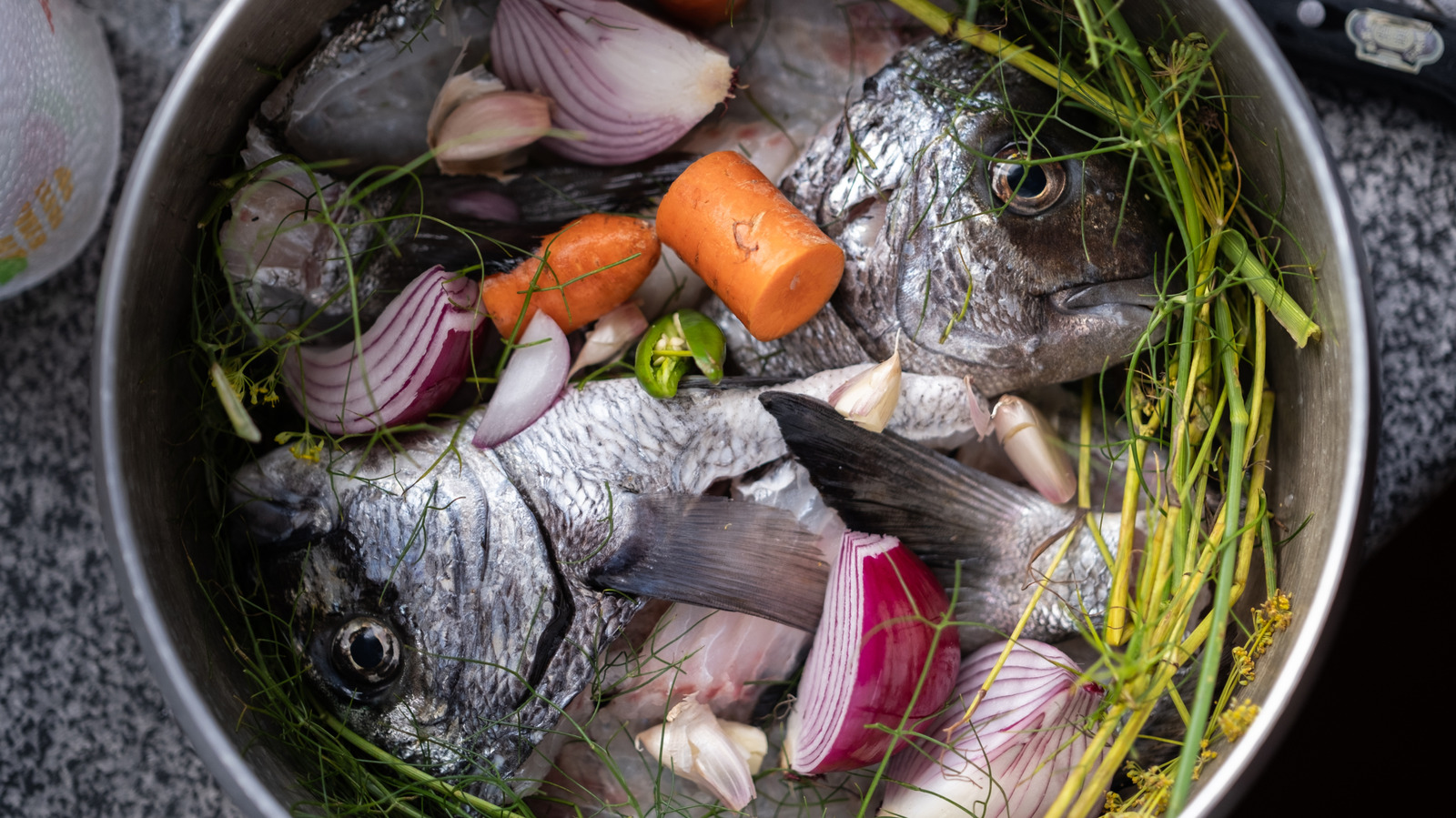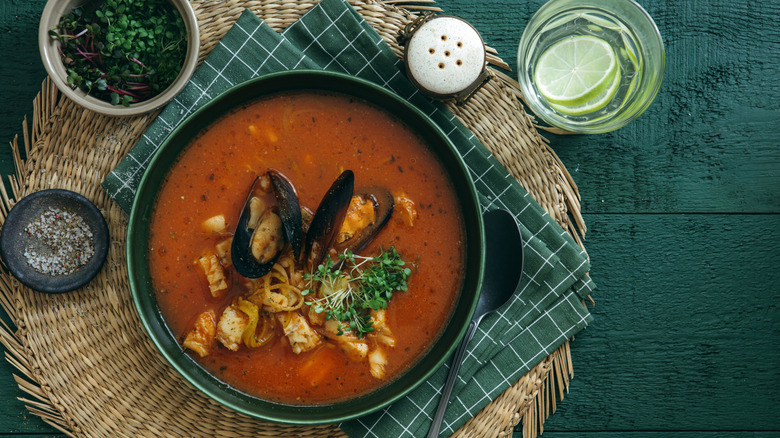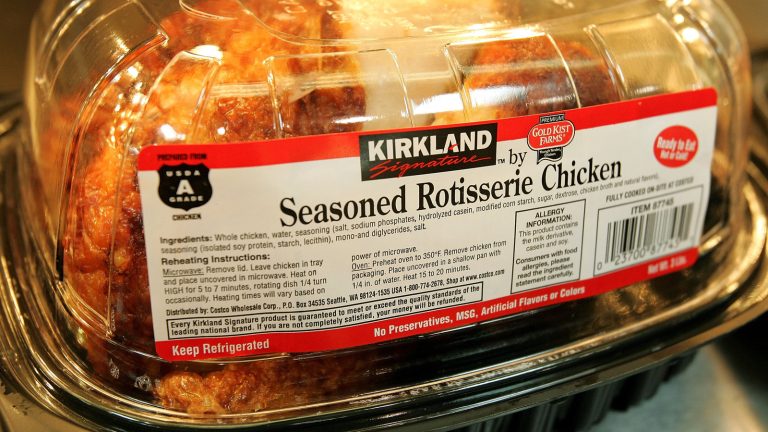Fish stock is a flavorful liquid used as the base for numerous dishes including the French stew bouillabaisse, seafood chowder, and paella (a Spanish rice dish made with seafood and saffron). The piquant broth is typically made from fish bones, fish heads, vegetables, herbs, and aromatics. Indeed, leftover fish scraps are the perfect excuse to make a flavor-packed stock. These ingredients are boiled and simmered in water for a shorter amount of time (20 to 30 minutes) than chicken or beef stock due to the seafood’s stronger flavor. For the best taste possible, it’s important to use the right type of fish for your stock. According to chef Angelo Sosa, who exclusively shared his decades of expertise with Chowhound, it’s best to use a light or milder-tasting fish that still has plenty of collagen. “Halibut, cod would be prime examples,” he clarified.
Mild fish will produce a stock that is not overpowering in flavor, making it perfect for a tasty seafood soup, stew, or rice dish. Additionally, collagen, found in animal bones, begins to break down when cooked for an extended amount of time and produces a thick, richly flavored, gelatinous stock (which is why the stock becomes jiggly like Jell-O when cold or at room temperature).
As a former “Top Chef” contestant and the current chef of three restaurants – Tía Carmen, Carmocha, and Kembara — chef Sosa knows what it takes to make flavorful, bold dishes. Luckily, he had other tips to share for making sensational fish stock.
More tips for optimizing your fish stock
Fish stock is an essential and flavorful base for soups, stews, and chowders all over the world, from creamy New England clam chowder and tomato-based Italian-American cioppino (“fisherman’s stew”) to traditional Spanish/Mediterranean sopa de pescada (“fish soup”) and spicy Chinese Szechuan boiled fish. For the finest flavored stock, in addition to choosing a mild, collagen-rich fish, it’s best to use a non-oily variety, since the oil can become foul-tasting after being cooked for an extended time. In addition to halibut and cod, bass and snapper are non-oily whitefish that are commonly used for making stock, while salmon, tuna, and trout are examples of oily fish that are not ideal for your broth.
Chef Angelo Sosa also points out that you are not required to use the meat of the fish when making stock. He advises, “You can use solely the bones to create your magical broth, and reserve the fillets for the dish.” Using the fish bones and the heads with the gills removed will give you enough fishy flavor. For a super savory stock, you can also use dried fish like dried anchovies. “Many times because of my understanding of Asian flavors I do add dried fish to my stock to create more umami and a well-rounded and unique flavor,” he shared. The high oil content in the anchovies is removed when dried, making them suitable for cooking in your stock.





